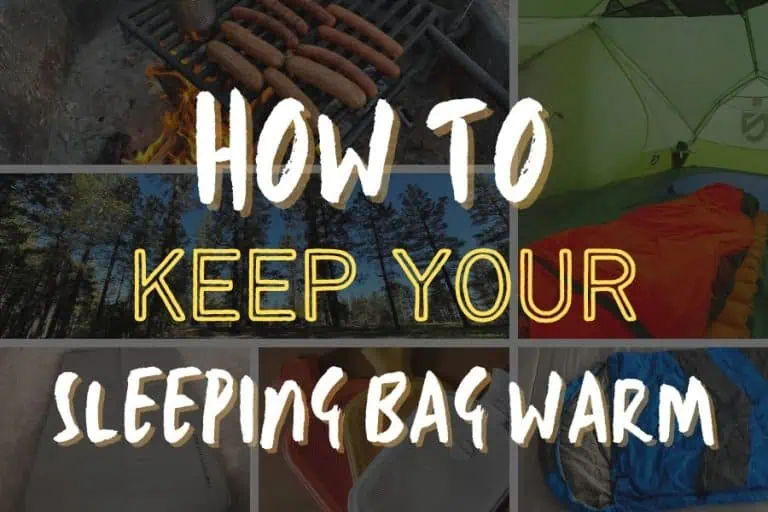Keeping your sleeping bag warm at night is about more than keeping yourself comfortable.
When you’re in frigid environments, it can mean the difference between a healthy, fun trip and an adventure that has to end early.
Making sure your sleep set up stays warm is a must for cold weather camping because it’ll help you maintain body heat, preventing the dangers of hypothermia.
Check out our warm sleeping essentials and some of our quick tips for staying toasty below.
Get a Zero Degree Sleeping Bag (or Better)
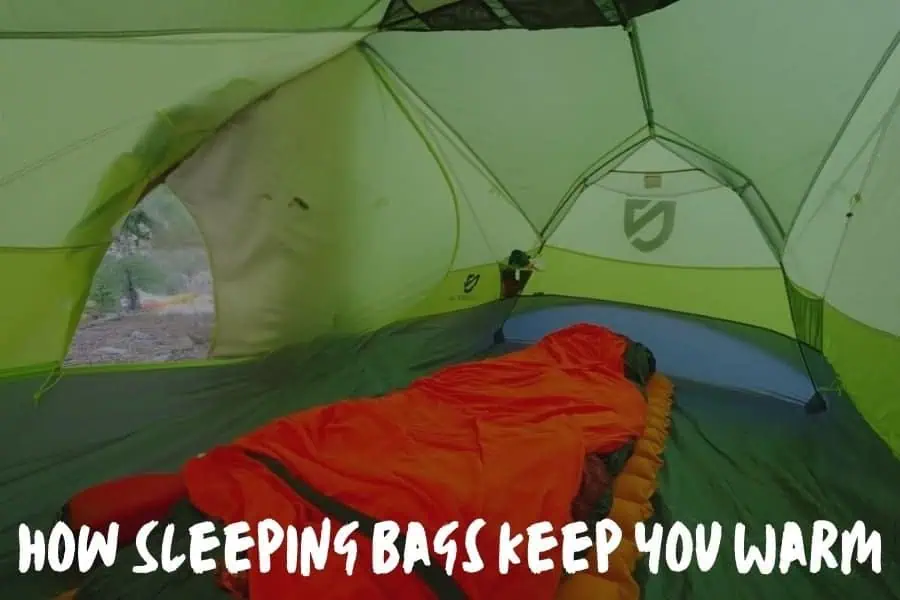
Sleeping bags keep you warm using the heat from your own body (otherwise known as radiating heat).
The insulation inside the bag traps that warm air and prevents it from escaping, helping to sustain your body’s natural temperature.
The best sleeping bags for cold weather, like mummy sleeping bags or a zero degree extreme cold sleeping bags, are designed to maximize heat retention, but there are additional steps you can take to stay warm throughout the night.
Sleeping Bag Temperature Ratings Explained
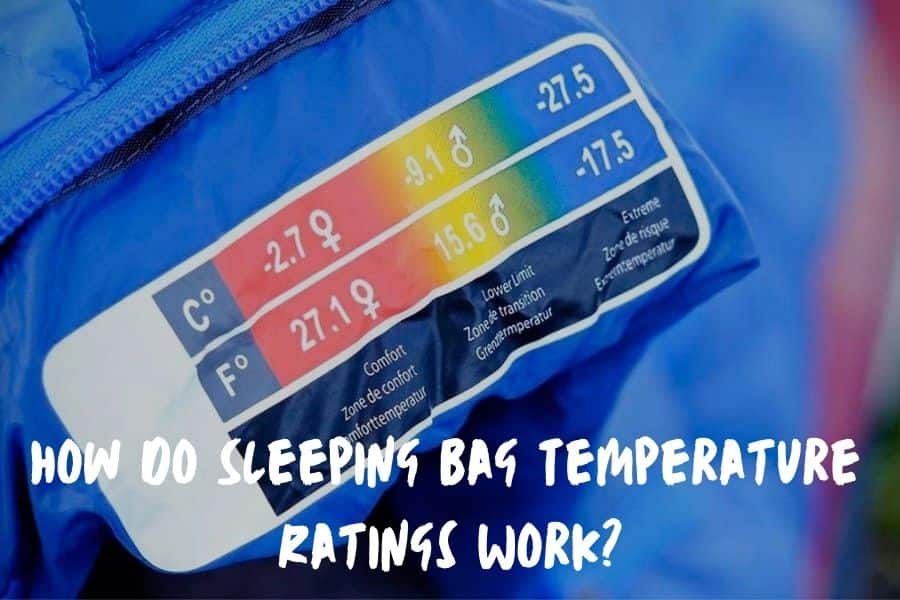
Sleeping bag temperature ratings tell you what kind of temperatures your bag can handle.
Although they can vary between brands, the main two systems you’ll see at your local outdoor shop are the European Standard (ES)/International Organization of Standardization (ISO) and the Season System.
European Standard (ES)/ International Organization of Standardization (ISO)
The ES/ISO Rating System is based on the concept of comfort limits. Check out the table below with more information.
EN RATING | DESCRIPTION |
Upper Limit | The highest temperature at which a standard adult male can sleep comfortably (without excess sweating). |
Comfort | The highest temperature at which a standard adult female can sleep comfortably. |
Lower Limit | The lowest temperature at which a standard adult male can sleep comfortably. |
Extreme | The survival rating for standard adult females, reserved only for potentially hypothermic conditions. |
If you want to read more about these ratings, check out this article for more information.
Seasonal Sleeping Bag Temperature Ratings
The Seasonal System is based on what weather seasons your sleeping bag is equipped to handle, so it’s a little more straightforward. We’ve included a table below with these ratings.
SEASON RATING | TEMPERATURES | IDEAL CONDITIONS |
1-Season | 5°C+ / 40°F+ | Warm summer campouts |
2-Season | 0 to 5° C / 32 to 40°F | Cooler summer or spring campouts |
3-Season | -5 to 0°C / 23 to 32°F | Colder campouts (no frost), although many campers use 3-season bags year-round |
4-Season | -10°C / 14°F | Colder campouts with frost |
5-Season | -40 to -10°C / 14 to -40° F | Mountain expeditions with extremely cold conditions |
While each type of season category can have an individual use, many campers opt to get a 3-season bag.
Use an Extreme Temperature R-Value Sleeping Pad
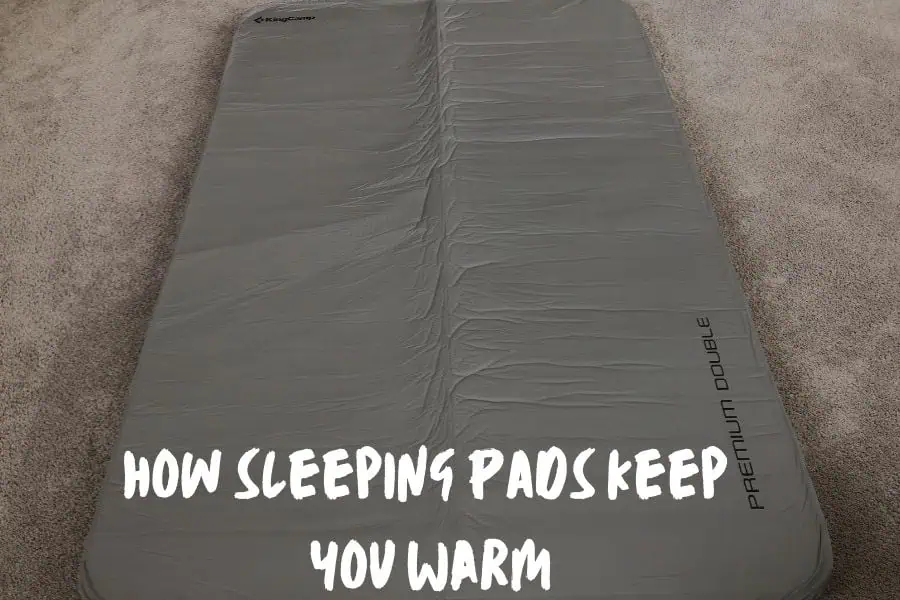
If you’re sleeping in extreme temperatures, you will not only need a great sleeping bag, but also a sleeping pad with a high R-value.
In fact, sleeping pad is one of the most important camping gear items for staying warm.
Not only does a sleeping pad make you more comfortable, it also creates a layer of air or material between you and the (very cold ground).
That buffer of air prevents heat loss and keeps you much warmer at night. There are a lot of good options out there, but we suggest this classic Therma-Rest pad, or this Static V2 Sleeping Pad.
Read the next section to learn about R-values, and what you should keep an eye out for when shopping for a camping sleeping pad.
Sleeping Pad R-Value Explained
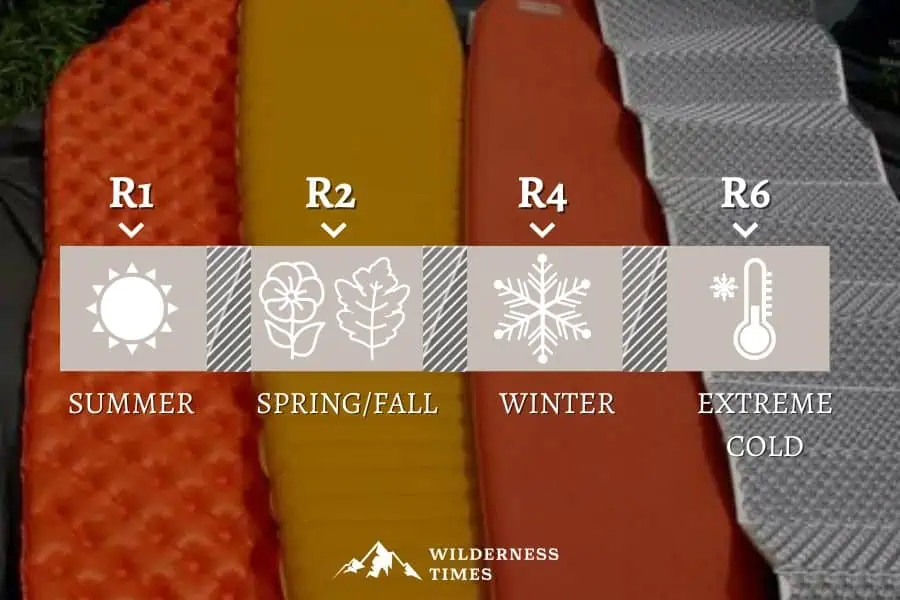
R-values tell you how effective your sleeping pad is at insulating you from the cold ground below you. The higher the R-value, the better the sleeping pad will be at shielding you from the cold radiating up from the ground.
For the most part, R-values range from 1-7 for backpacking sleeping pads (camping mattresses can get into the teens, but they’re way less portable for longer outdoor treks).
R-values can be a little tricky because while they protect you from cold temperatures, they don’t actually correlate with any specific temperature ratings.
Instead, the general convention is that you should correlate a range of R-values with the weather seasons.
Check out our handle table below to see how they match up:
R-VALUE | SEASON | DEGREES (FAHRENHEIT) | DEGREES (CELCIUS) |
1 | SUMMER | 50° | 10° |
2 | SPRING, SUMMER, FALL | 30° | -1° |
3 | SPRING, SUMMER, FALL | 25° | -4° |
4 | SPRING, SUMMER, FALL | 10° | -12° |
5 | WINTER | 0° | -18° |
6 | WINTER | -15° | -26° |
7 | WINTER, EXTREME | -25° | -32° |
8 | EXTREME | -40° | -40° |
Use an Effective Sleeping Bag Liner
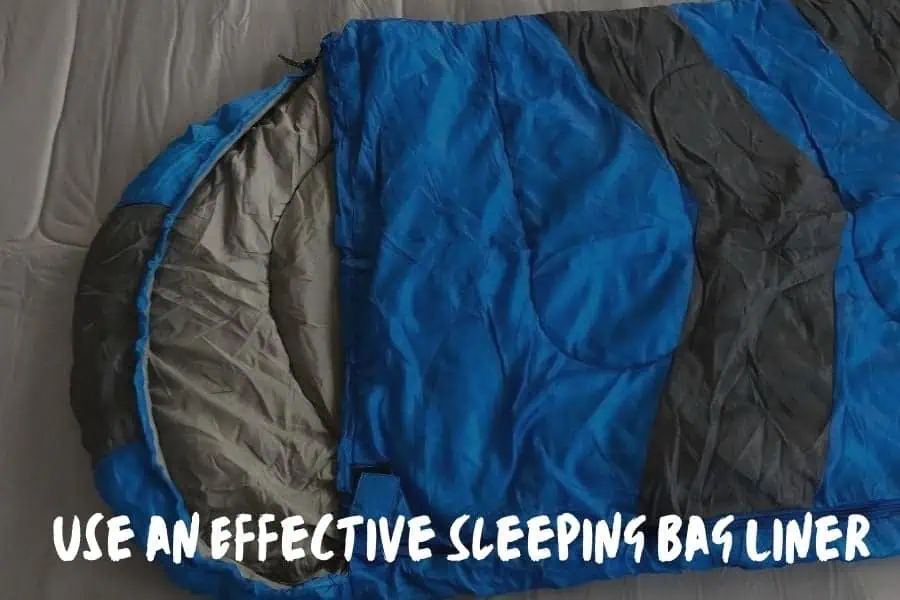
Bag liners can be a real gem.
Typically, sleeping bag liners are made of thin, breathable, insulated material that acts as an additional layer between your body and your sleeping bag.
This extra layer of insulation will help you make an even wider heat barrier and maintain your body heat better than before.
This is an especially good piece of camping gear for anyone who struggles with overall circulation (looking at you with those cold hands).
You can have your choice of sleeping bag liners made from silk, microfiber, fleece, and other materials.
If you’re interested in a sleeping bag liner, take a look at this Sea to Summit Reactor Thermolite Liner or for a cheaper option check out the Naturehike Ultralight Washable Sleeping Bag Liner.
Choose The Right Camp Site
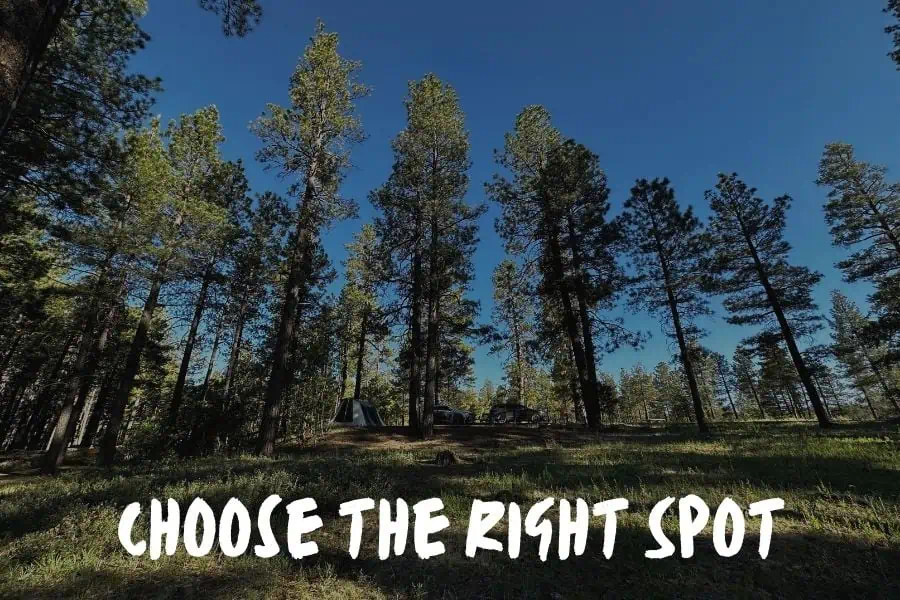
Location, location, location!
When setting up camp, find an area tucked away from windy spots, such as behind large rocks or on the protected side of a hill, to keep cold air away from your tent.
Also avoid setting up camp in low-lying areas where cold air can settle, because it’ll create an overall colder environment.
Long story short, a well-placed tent can make a significant difference in keeping you warm on your outdoor excursion.
Also Read: Types of Campsites – The ULTIMATE Guide to Campsites, Campgrounds & Camping Amenities
Use a Hot Water Bottle

Sleeping bags rely on the heat already inside them to keep you warm.
One trick to speed up the warming process is placing a hot water bottle inside the sleeping bag before bed, particularly near your feet.
This easy add to your camping accessories can help you maintain warmth for hours so you can get a cozy and comfortable sleep, and be ready to go in the morning!
Also See: How To Insulate A Tent For Winter Camping
Wear a Hat
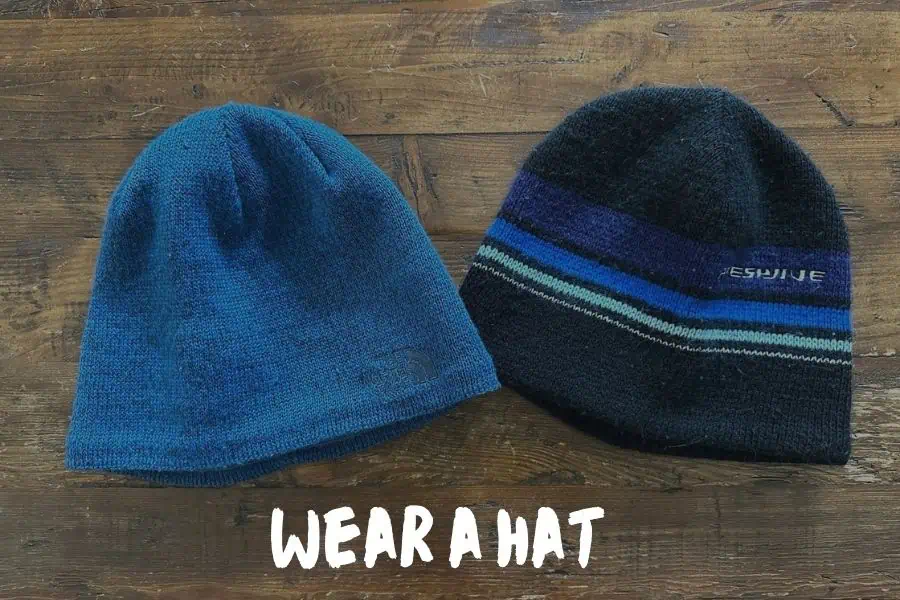
Did you know you can lose up to 10% of your body heat through your head?
Most sleeping bags will cover a large part of your body, but even the best will leave your face and head exposed to the elements.
Wearing a good winter hat helps conserve body heat and prevents heat loss from your head, keeping your whole body and sleeping bag warmer.
Plus, you’ll get to rock your favorite winter hat style and get a little bit cozier before you go to bed.
Need one? Check out the MERIWOOL Unisex Merino Wool Beanie.
Also Read: Winter Layering Guide: How to Layer for Cold Weather
Don’t Wear Wet Clothing
Do not wear wet clothing in your sleeping bag!
Wet clothing saps warmth from your body and makes you feel cold, no matter how good your sleeping bag is.
Before getting into your sleeping bag, make sure your clothes are dry.
If needed, bring an extra set of dry clothes specifically for sleeping to avoid losing too much body heat.
Eat a Good Meal

Eating a good camping meal before bed can keep you warm and help your sleeping bag feel toasty.
When your body digests food, it generates heat, which helps maintain warmth throughout the night.
High-protein and high-fat foods are especially effective for sustaining body heat during an outdoor excursion in extreme conditions.
So eat that extra portion of dinner, and dig into that backcountry dessert!
You’ll thank me later.
Also Read: Camping Foods Do’s and Don’ts — Avoid These Mistakes!
Final Thoughts
Whether you’re preparing for an outdoor excursion, a fun outdoor adventure with the family, or a serious winter camping trip, staying warm at night is super important.
When you bring the right essential camping gear like a great zero degree sleeping bag, a high R-value sleeping pad, and an effective sleeping bag liner you’ll be on your way to a warm and cozy night.
And when you use some of our additional tips – you’ll be ready for any cold-weather adventure!
Happy camping!
Next up: Winter Camping 101: 12 Tips For Keeping Safe And Warm


